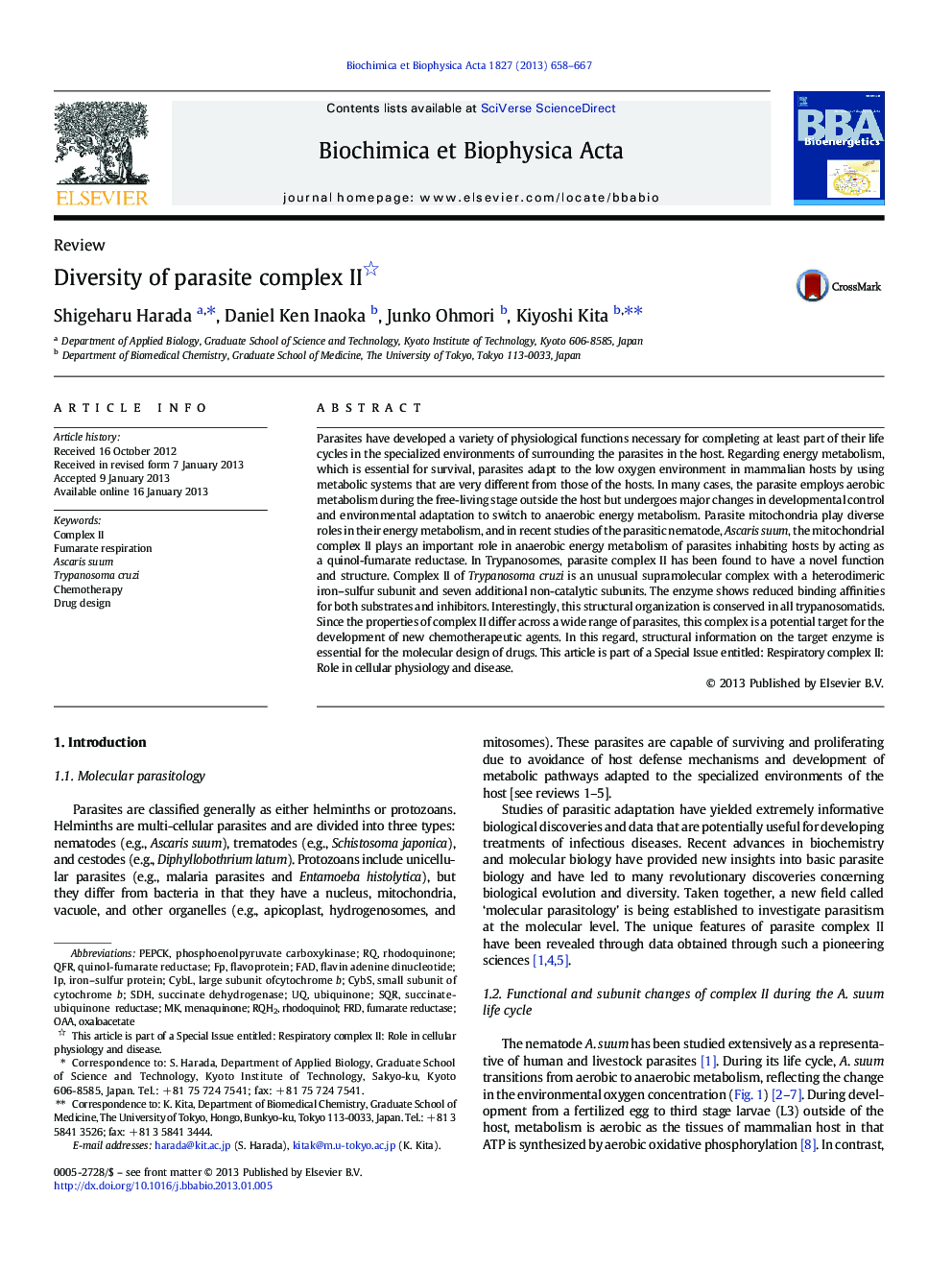| Article ID | Journal | Published Year | Pages | File Type |
|---|---|---|---|---|
| 1942259 | Biochimica et Biophysica Acta (BBA) - Bioenergetics | 2013 | 10 Pages |
Parasites have developed a variety of physiological functions necessary for completing at least part of their life cycles in the specialized environments of surrounding the parasites in the host. Regarding energy metabolism, which is essential for survival, parasites adapt to the low oxygen environment in mammalian hosts by using metabolic systems that are very different from those of the hosts. In many cases, the parasite employs aerobic metabolism during the free-living stage outside the host but undergoes major changes in developmental control and environmental adaptation to switch to anaerobic energy metabolism. Parasite mitochondria play diverse roles in their energy metabolism, and in recent studies of the parasitic nematode, Ascaris suum, the mitochondrial complex II plays an important role in anaerobic energy metabolism of parasites inhabiting hosts by acting as a quinol-fumarate reductase. In Trypanosomes, parasite complex II has been found to have a novel function and structure. Complex II of Trypanosoma cruzi is an unusual supramolecular complex with a heterodimeric iron–sulfur subunit and seven additional non-catalytic subunits. The enzyme shows reduced binding affinities for both substrates and inhibitors. Interestingly, this structural organization is conserved in all trypanosomatids. Since the properties of complex II differ across a wide range of parasites, this complex is a potential target for the development of new chemotherapeutic agents. In this regard, structural information on the target enzyme is essential for the molecular design of drugs. This article is part of a Special Issue entitled: Respiratory complex II: Role in cellular physiology and disease.
Graphical abstractFigure optionsDownload full-size imageDownload high-quality image (251 K)Download as PowerPoint slideHighlights► Parasite mitochondria play diverse roles in anaerobic metabolism. ► Ascaris suum complex II plays an important role as a quinol-fumarate reductase. ► Complex II of Trypanosoma cruzi is an unusual 12 subunits complex. ► Novel complex II is a potential target for the new chemotherapeutic agents. ► Structural information on the enzyme is essential for the molecular drug design.
